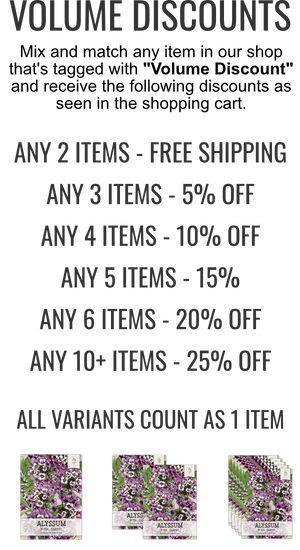Description
Add the Horehound herb to your herb collection this year. Horehound plants tend to grow to a mature height of 12 to 24 inches tall. The leaves are 1-2" long, crinkly grey-green and are coated in a thick fuzz. The plants are bushy and dense, with many leafy stems growing out from the root. The leaves grow in pairs on opposite sides of the stem. It can be told apart from other related plants by the dense hair on the stem and leaves. The tiny white flowers grow in clusters around the stems on the upper part of the plant.
Marrubium vulgare is a member of the mint family. This perennial herb is native to Europe, northern Africa, and western/southwestern Asia. It features heavily in legends and folklore, and is associated with lightning, gnomes, elves, pixies, and fairies. It was reputed to have anti-magical properties.
It is very hardy and grows best in dry, poor soil. It grows readily in over-grazed areas, wastelands, and disturbed areas throughout New England. The only care it needs once established is weeding. The flowers turn into clinging seeds that will stick to clothing and fur to enable their spread.
There are a couple of insects which can harm horehound herbs. One is an orange and black stinkbug called the horehound bug which sucks the sap from new shoots, causing them to wilt. There is also a kind of moth called the horehound plume moth which is used to try and control horehound, as the larvae eat it while growing. A positive note related to insects is that Horehound has been used as a natural grasshopper repellent. This can be a good herb to have around if you wish to deter them.
Horehound has been declared an invasive weed in Australia because it takes over whole fields where there has been over-grazing, and herd animals will not eat it.
This herb has long been used medicinally and is described in multiple ancient Roman and Egyptian texts.
It is used to treat respiratory illnesses and coughs and is an ingredient in many natural cough drops. It was also used to treat stomach problems, indigestion, and skin problems. Many sources say that it is best used fresh, though it can actually be dried and preserved. The parts of the plant that are useful are those that are above the ground. Cut the plant as soon as flower buds appear. If you dry it to keep it, seal it tightly in jars as soon as it is dry and store away from the light.
Some recent research has found that the essential oil of Horehound, and an active compound that is found in its leaves have antimicrobial, antifungal, cytotoxic and antidiabetic properties in laboratory plates. It also has culinary uses due to its pleasant taste and is made into hard candies, beer, cocktails, and teas.














